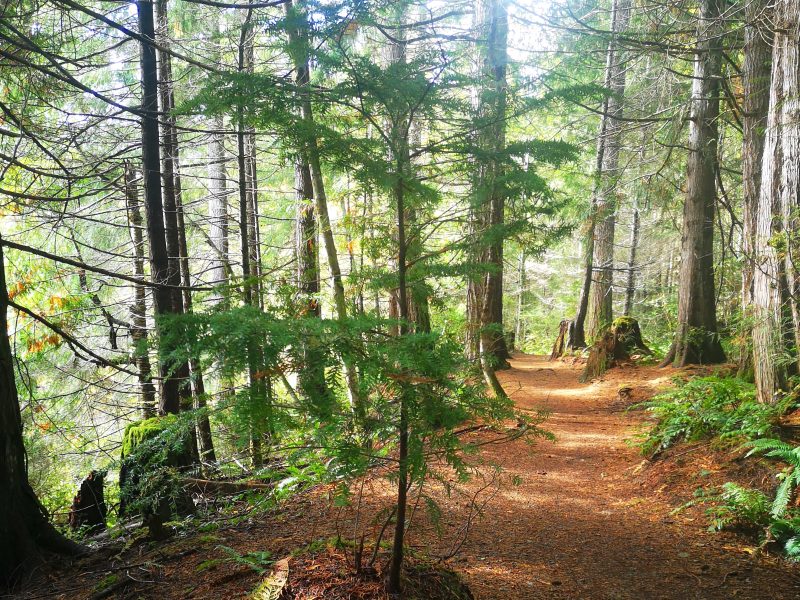
Every two years, members of the Gwich’in Nation from Alaska, Yukon and Northwest Territories gather to practice culture, speak their language and assert governance as a nation – in spite of the borders that separate them. For the last week of June, around 100 people gathered in Tsiigehtchic, N.W.T., more than doubling the population of the small riverside community that sits high at the junction of the mighty Nagwichoonjik (Mackenzie) and Tsiigehnjik (Arctic Red) rivers.
It takes two days to drive from Whitehorse, YT to the northwest border into N.W.T. A four-wheel-drive vehicle is a must in order to traverse the Arctic’s first highway safely, since it’s covered in gravel and deadly soft shoulders (we saw a semi-truck on its side, having made a fresh run off the highway on the way home). After scenic mountain passes surrounding Tombstone National Park, more clouds and red canyons, we made two ferry trips across the Mackenzie River to land in Tsiigehtchic.
When I arrived, what struck me first was the number of playgrounds and childcare centres for a community of its size. It didn’t take me long to understand why: Fifty seven per cent of the community is under the age of 15.
I came to Tsiigehtchic to learn about Indigenous governance, from the perspective of an Arctic nation divided by three borders – and expected to learn from adults. But as the week progressed, I learned that Gwich’in governance is by and for the youth.
I witnessed young people seated at the table alongside elected leaders, if not already elected themselves, crafting declarations for the protection of land, language and resources. I even learned that prior to the arrival of fur traders and missionaries, it was customary for Gwich’in parents to take the name of their first-born child, discarding their own.
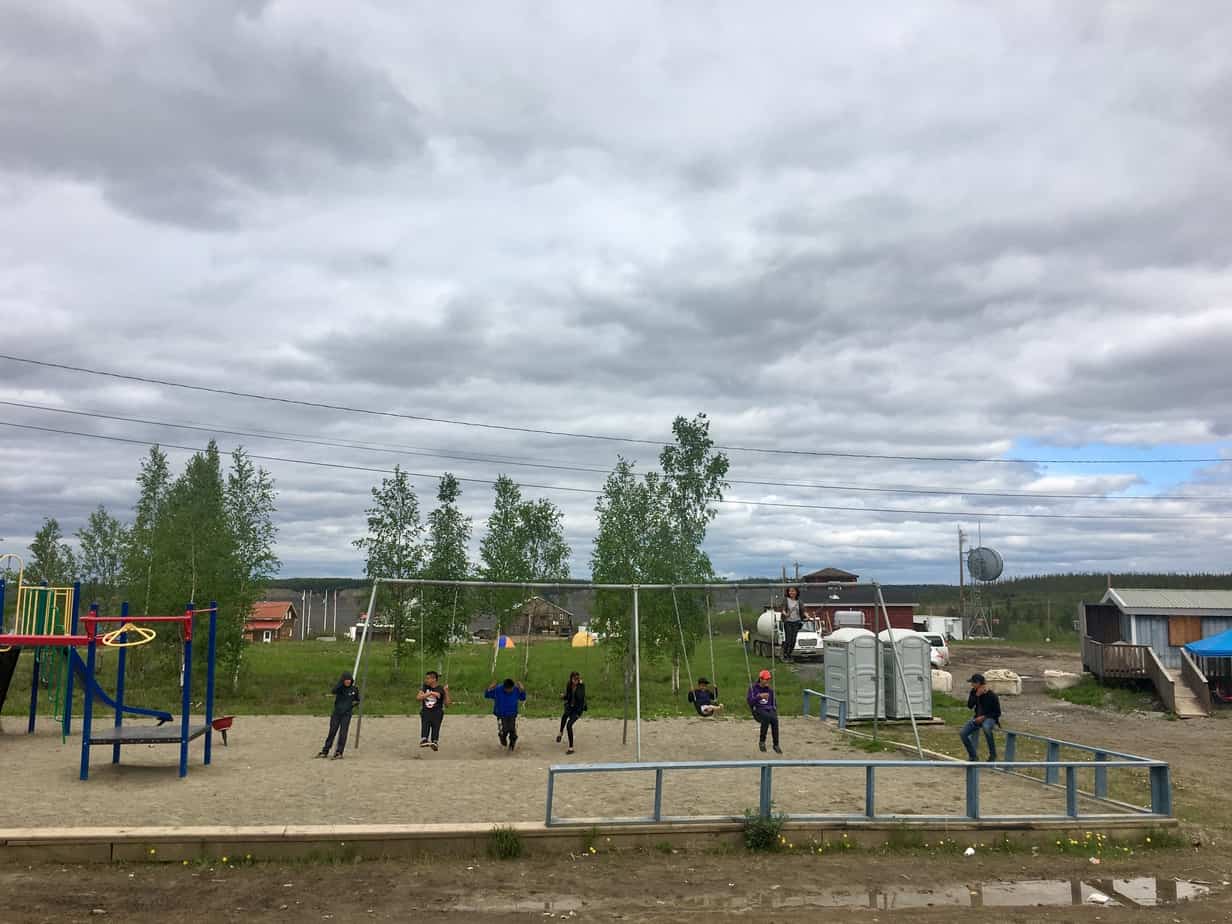
Not many youth attended the gathering consistently, but those who did made a lasting impression. Meet two of them:
Dayle Cole, Tsiigehtchic, N.W.T.

I first met Dayle when she read the opening prayer for the gathering as the sacred fire was lit. I wasn’t expecting to hear a 13-year-old voice set the tone for the week to come. But even more remarkable was the fact that she did so in her Gwich’in language, Dinjii Zhu’ Ginjik. This language is one of the most endangered Indigenous languages in the country and many community members in Tsiigehtchic spoke about the challenge of sustaining language programs. When Dayle completed the prayer, elders encircled her, wiping tears from their eyes. Dayle’s peers opted for high fives.

My colleague Vanessa Brault and I sat with Dayle on a picnic bench high up on the riverbank, beside two churches. Gazing down at the Arctic rivers below us, we asked Dayle what life in Tsiigehtchic was like. She replied, without pause, that she loves it here. After spending a few years in urban Edmonton, Alta., she had missed being able to run free. We also learned she wants to be a surgeon when she grows up, and loves to play basketball. She’s a big sister to Paton, who is five, two brothers and a new baby girl, born the week of the gathering.
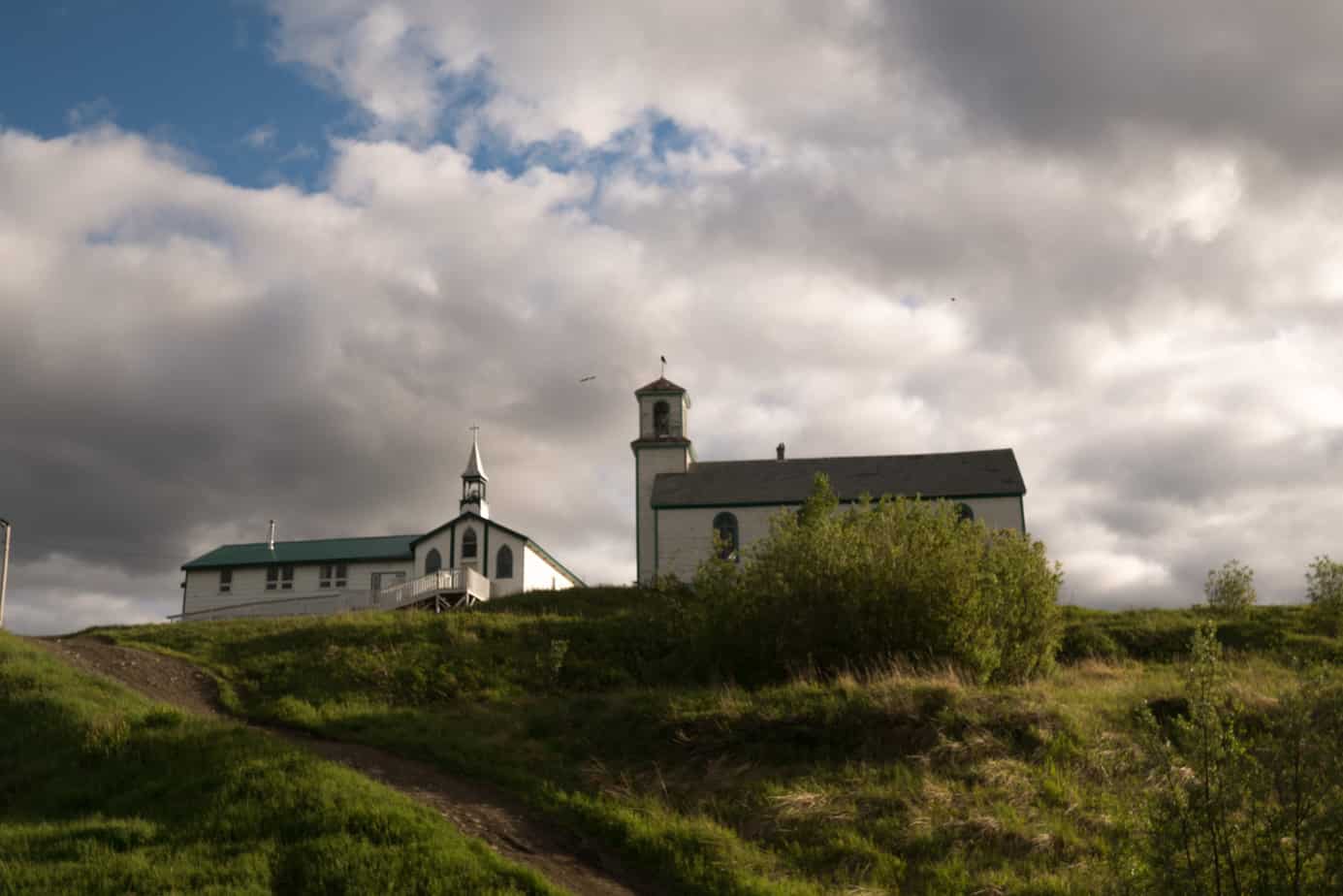
Dayle shot her first caribou when she was eleven years old. When asked how it felt, she says: “It’s fun, but then nervous, because when you shoot the gun it’s like, is it going to kick back? Or am I going to fall in the snow?”
Her Dad taught her how to send a blessing to the caribou, Dayle says. “We go to it and make sure it’s dead, and we’ll sit right by it and put tobacco or something right by it where it died, or else right at the nearest tree.” She says it makes her sad when people hunt carelessly. “Me and my Dad, we went hunting once, and we went behind this mountain and there were just like dead caribou there, just shot and left.”
She also goes duck hunting in the spring, travelling behind her dad on a skidoo, pulling a sled of hunting supplies behind them. “It’s fun because in the spring it’s all slushy and there’s parts of the river where it’s open water and you skip over the water,” she says.
Robert Arey-Cardinal

At the Gwich’in gathering, every night is a dance party. The sun doesn’t fully set – it just dips down and rises once more – so there is no bedtime. Children and elders alike dance to fiddle music and to a sea of drums until the musicians stop.
I first met 12-year-old Robert Arey-Cardinal as I watched him dance. He was always first, sneakers springing him off the floor as he cried out to the beat of the drum. Slowly, people of all ages would join him, and Robert would gravitate to the centre like an anchor.
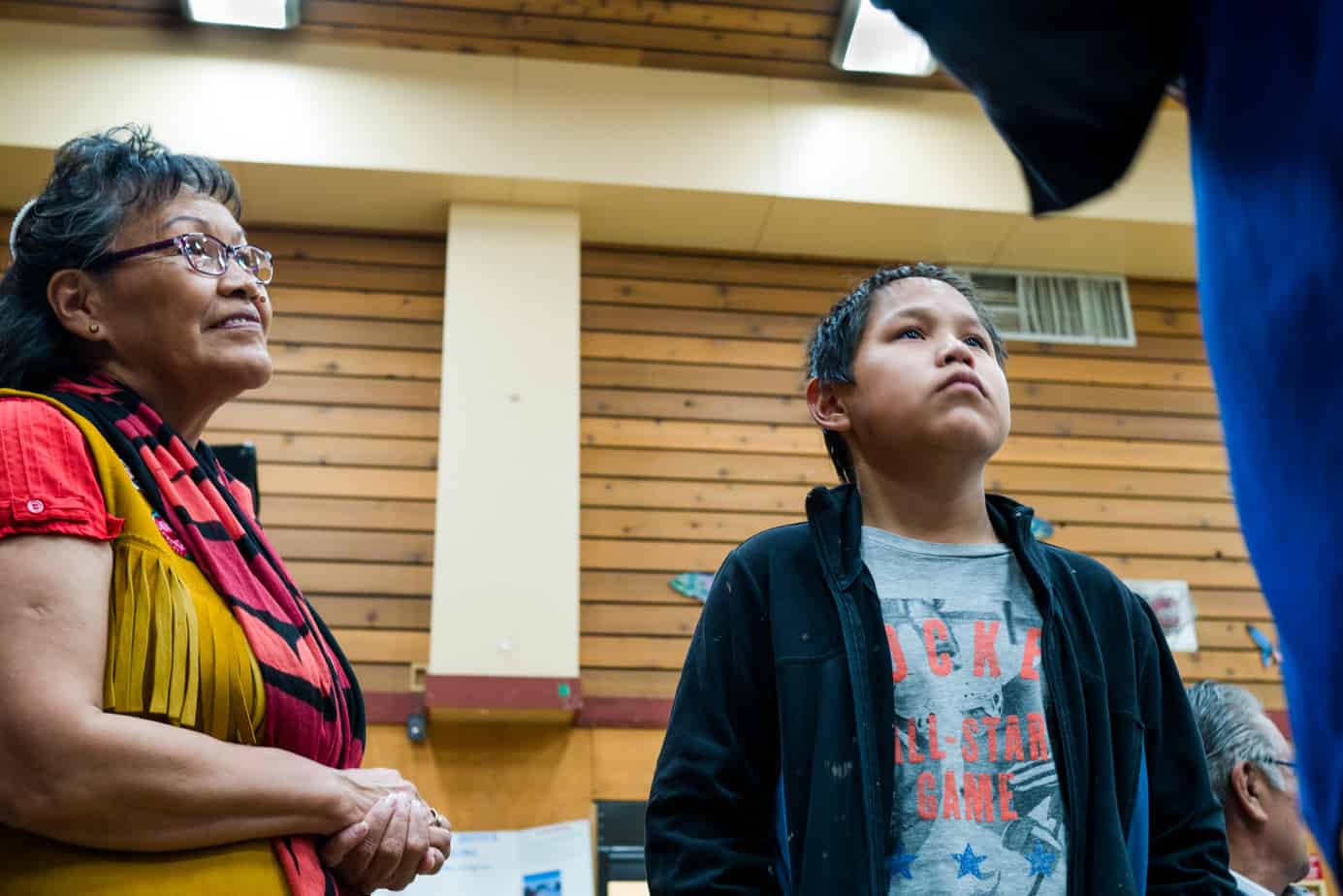
The next day, Vontut Gwich’in council member Esau Schafer lauded the young man’s contributions to the gathering. Robert happened to be in the foyer of the gym, and other members called him in. Standing in front of Esau, Robert was thanked for bringing the community together, and told he would be a leader one day. Later on, another elder made a call out to the community for moccasins in Robert’s size.
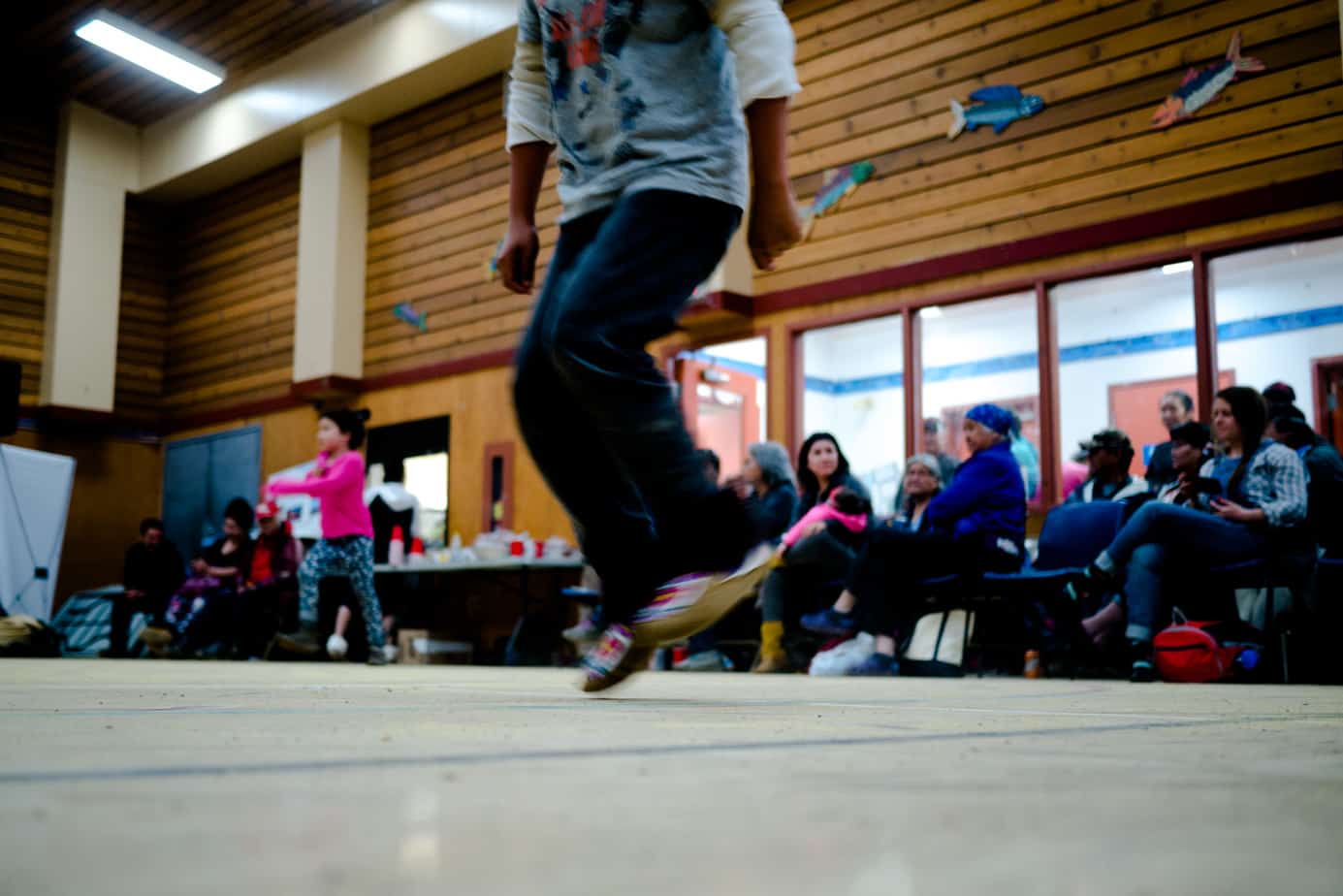
That night, and every night that followed, his moccasins lifted him even higher off the dance floor than before. Robert says he just started dancing recently, and he wants to continue to be a dancer when he grows up. I asked him what it feels like when he dances. “My foot was trying to tell me to dance,” he says.
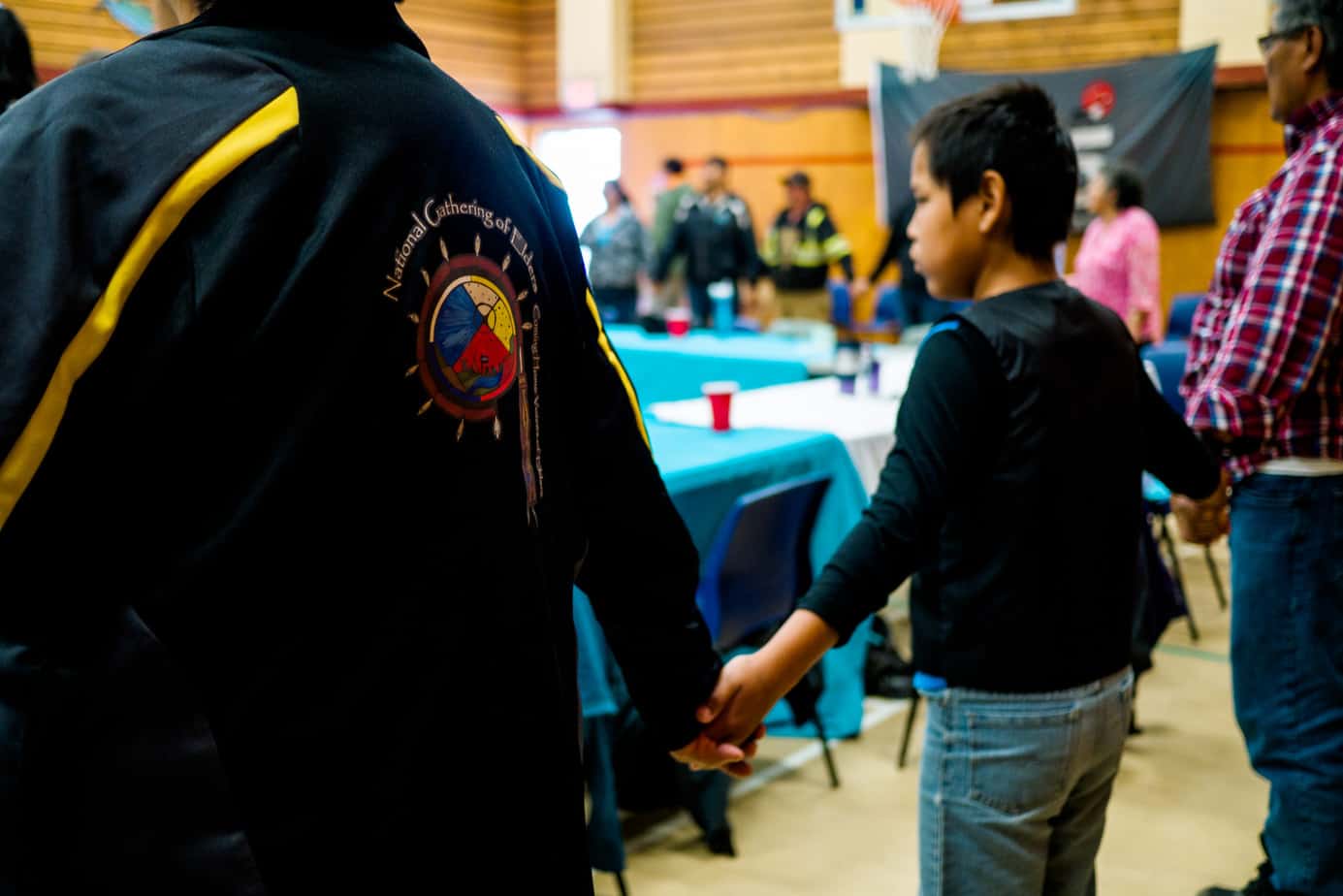
On the final day, Robert sat at the governance circle, with two elders on either side. Robert told me his favourite part about the gathering, next to dancing, was learning about the porcupine caribou herd. Vuntut Gwich’in council member Dana Tizya-Tramm sat nearby Robert during the closing circle and said: “I know that in the future, I would like to see more youth in the gatherings in the room, and … we have a very young man here who is already gravitating towards that. For his own reasons, he knows why he wants to be here. And I just wish that the youth out there who feel lost, they could feel a little bit of this too.”[end]


